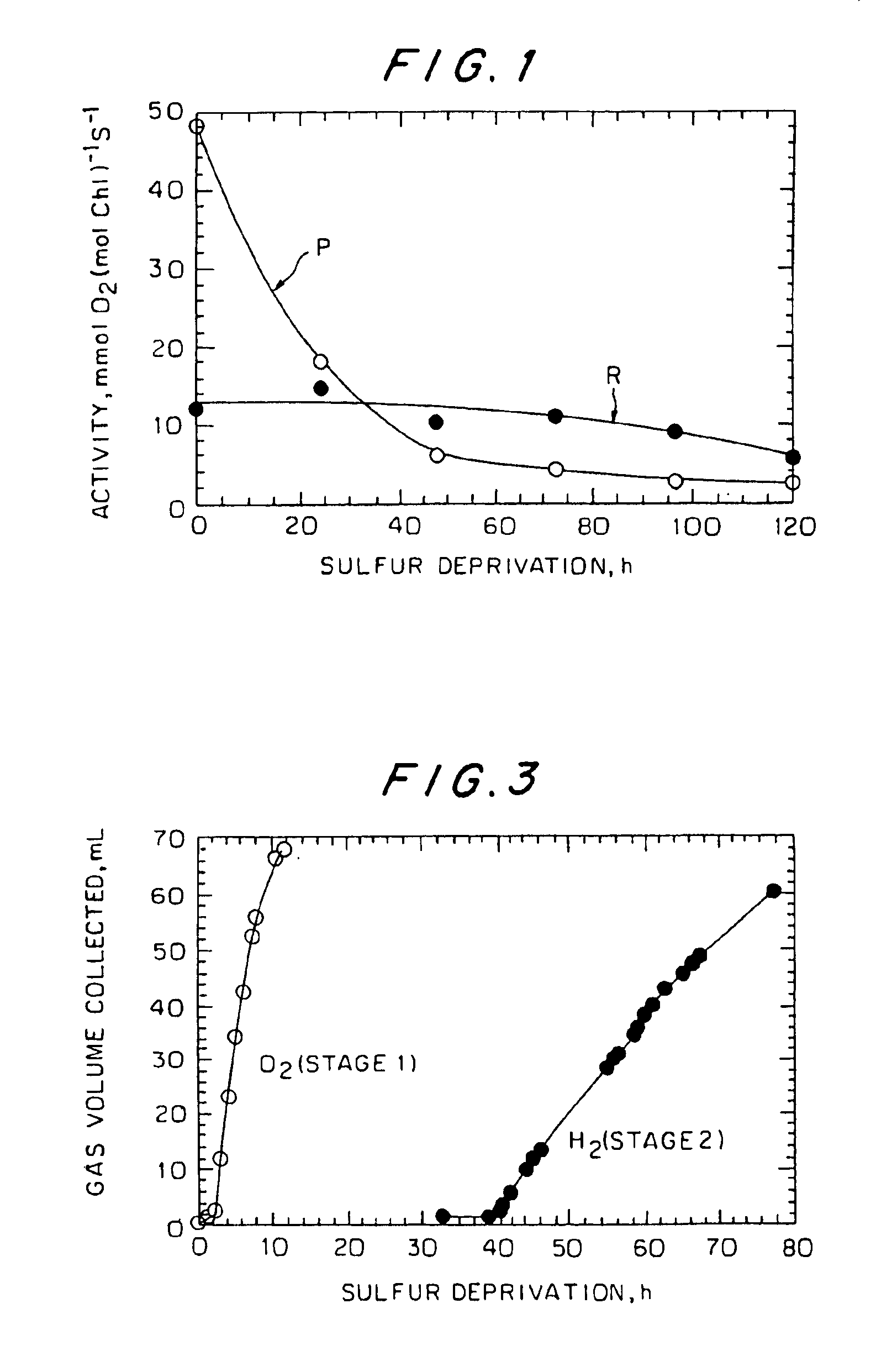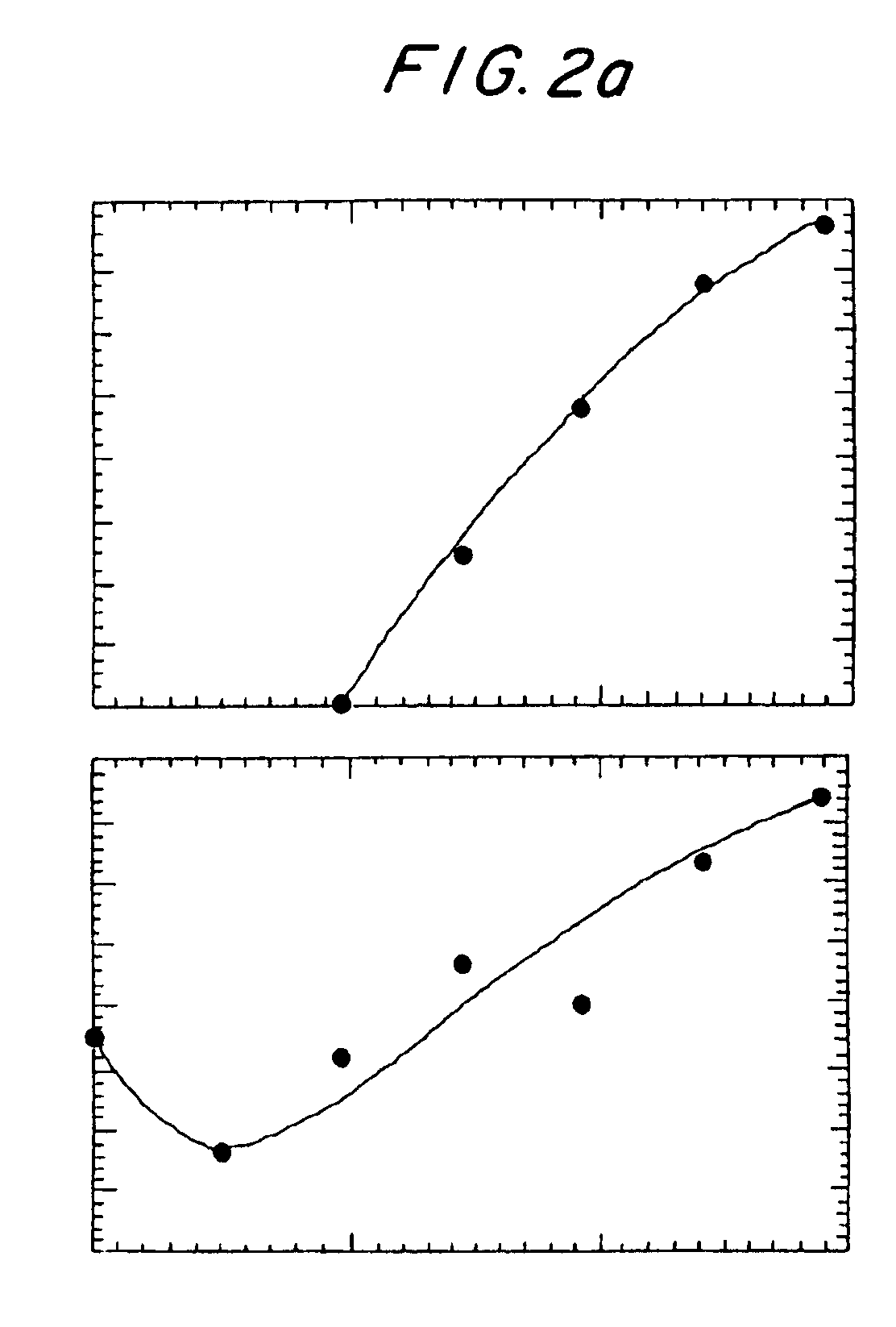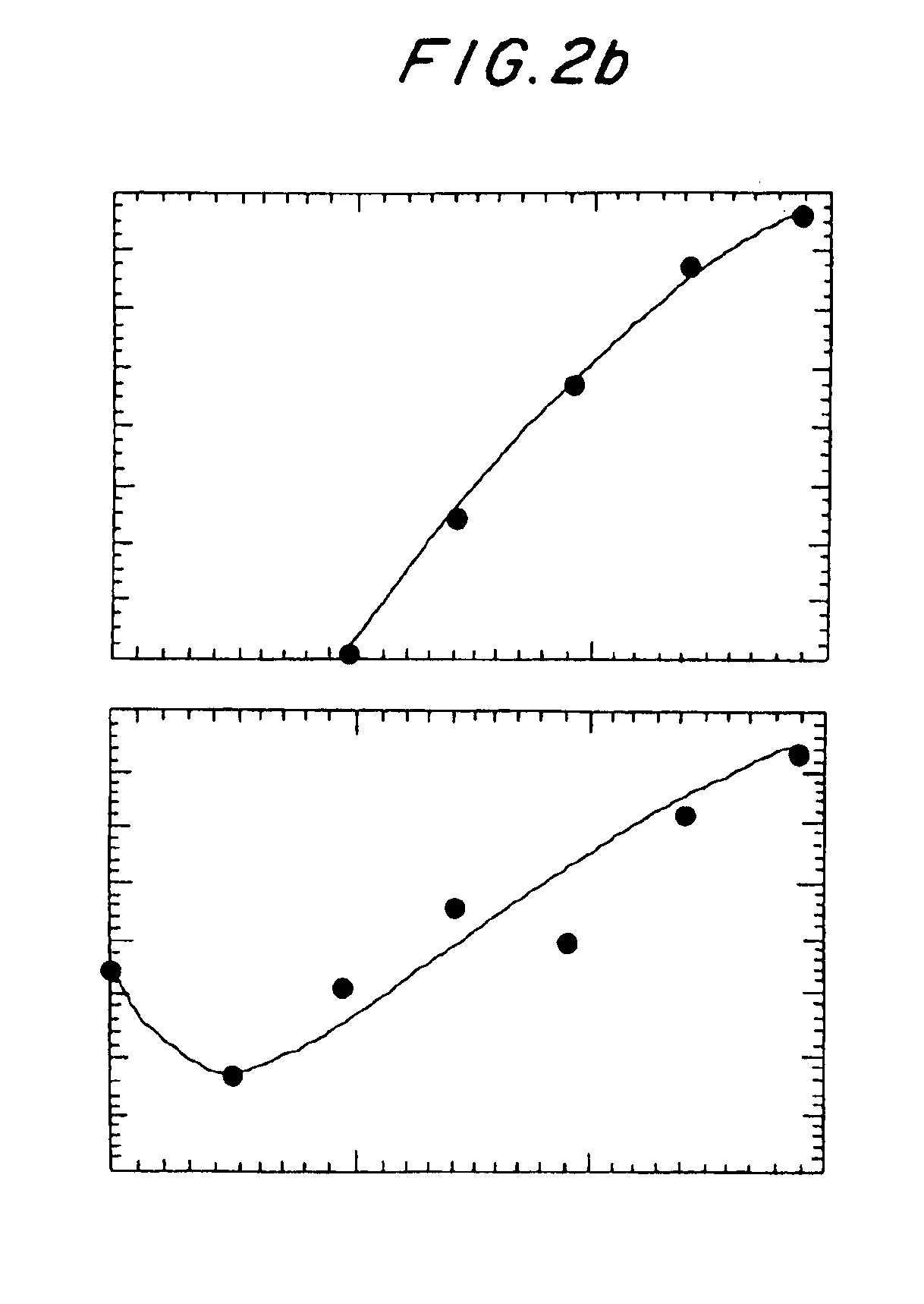Hydrogen production using hydrogenase-containing oxygenic photosynthetic organisms
a technology of oxygenic photosynthetic organisms and hydrogenase, which is applied in the field of biophoto, can solve the problems of high cost, impracticality of large-scale mass culture of algae, and rapid loss of activity, and achieve the effect of low cos
- Summary
- Abstract
- Description
- Claims
- Application Information
AI Technical Summary
Benefits of technology
Problems solved by technology
Method used
Image
Examples
example 2
[0035]FIG. 2 shows the result of such measurements with a sulfur-deprived culture of C. reinhardtii. In this experiment, a 1-L culture of algae at a cell density of about 6×106 cells / ml was incubated in sulfur-deprived medium under continuous illumination. The sulfur-depleted medium was also but not limited to Tris-acetate-phosphate medium in which MgCl2, ZnCl2, CuCl2, and FeCl3 are used instead of the respective sulfates. The cells could be cultured at up to saturating light intensity and at any temperature at which they can survive. The flask was sealed 24 h after S-deprivation, when the rate of photosynthetic O2 evolution was determined to be equal to or less than the rate of respiration. Hydrogen evolution activity, measured with a Clark-type H2 electrode (Seibert et al., 1998), was detected in aliquots taken from the culture at t>35 h (results not shown). Thus, sulfur deprivation itself does not appear to exert a negative effect on the induction of the reversible hydrogenase. H...
example 3
[0037]FIG. 3 shows the result of experiments in which sulfur-deprived cultures were supplemented with 25 mM NaHCO3, pH 7.6, to serve as the substrate of oxygenic photosynthesis. C. reinhardtii cultures grown in a Roux bottle (850 ml capacity), and having a density of about 3×106 cells / ml, were incubated in the sulfur-deprived medium in the light. The sulfur-free medium was also but not limited to tris-acetate-phosphate medium in which MgCl2, ZnCl2, CuCl2 and FeCl3 are used instead of the respective sulfates. The cells could be cultured at up to saturating light intensity and at any temperature at which they can survive. Cultures were sealed at 0 h and O2 gas collection was measured with the inverted graduated cylinder setup (Stage 1). In Stage 1, the rate of O2 gas accumulation (estimated from the slope of the line in FIG. 3, O2) was about 12 ml O2 h−1 (equivalent to 25 μmol O2 (mol Chl)−1 s−1) This rate, not corrected for cellular respiration, is comparable to the average of the ra...
example 4
Structural and Functional Properties of the Hydrogen-Producing Photosynthetic Apparatus
[0038]The Chl content of the cells and the composition of the thylakoid membrane in C. reinhardtii change upon sulfur deprivation. FIG. 4 shows that the cell density of the culture increased transiently from about 3×106 cells / ml at 0 h to about 4×106 cells / ml at 60 h, and subsequently declined to 3×106 cells / ml at 120 h of sulfur deprivation. Concomitantly, the Chl content of the culture declined steadily from about 8 μM to about 4 μM over the duration of this experiment. The Chl content per cell declined from about 2.8×10−15 mol Chl / cell to about 1×10−15 mol Chl / cell after 120 h of sulfur deprivation. These results show that some cell division does occur during the first 60 h of sulfur deprivation but that a gradual loss of Chl also occurs throughout the deprivation period. The Chl a / Chl b ratio of the cells increased only slightly (by about 10-20%) in the 0-120 h sulfur deprivation period.
[0039]...
PUM
 Login to View More
Login to View More Abstract
Description
Claims
Application Information
 Login to View More
Login to View More - R&D
- Intellectual Property
- Life Sciences
- Materials
- Tech Scout
- Unparalleled Data Quality
- Higher Quality Content
- 60% Fewer Hallucinations
Browse by: Latest US Patents, China's latest patents, Technical Efficacy Thesaurus, Application Domain, Technology Topic, Popular Technical Reports.
© 2025 PatSnap. All rights reserved.Legal|Privacy policy|Modern Slavery Act Transparency Statement|Sitemap|About US| Contact US: help@patsnap.com



